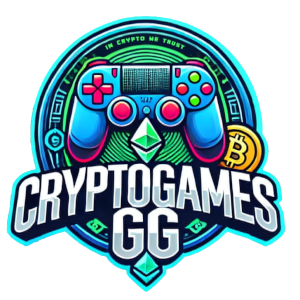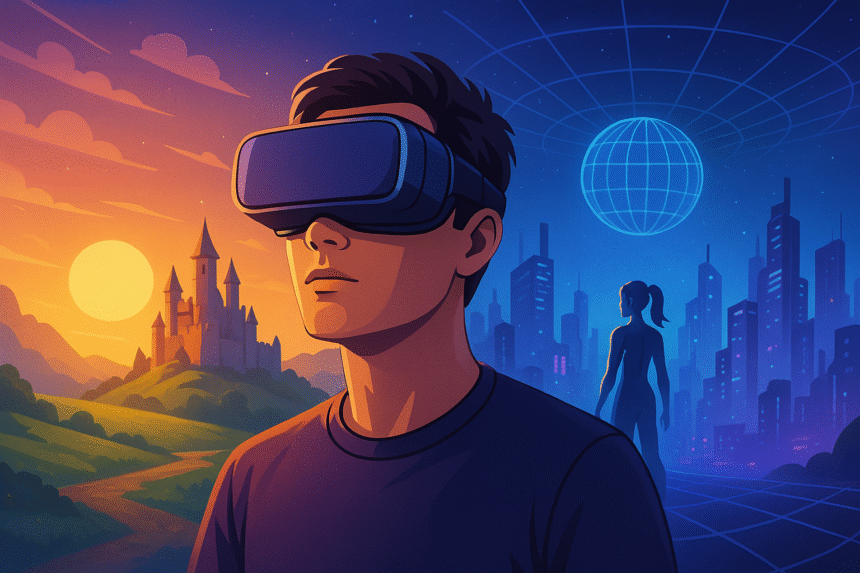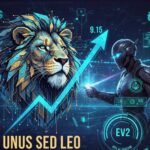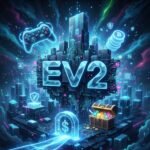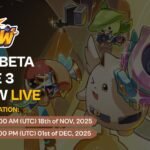Web3 gaming is transforming the gaming frontier. The EV2 presale, for instance, shows that metaverse gaming has shifted into a fully playable, narrative-rich, and player-driven economy.
In conventional online gaming, central bodies such as game developers own and control in-game items, including avatars, skins, and weapons. However, the advent of web3-powered gaming platforms is changing this narrative, setting the stage for an era of immersive gaming ecosystems.
Nowadays, players can engage in immersive gaming experiences within virtual worlds, also known as the metaverse. In this new gaming realm, players can own in-game assets, chart the game storyline in real-time, and even actively engage with each other via social communities.
Even more exciting, it is now possible for anyone to access and experiment on these new gaming worlds, thanks to presales that give exclusive access to early buyers. These presales enable early participants to influence web3 game development, making them not only interactive but also economically meaningful.
The Evolution of Gaming into Metaverse Economies
The transition from traditional gaming to Web3 gaming has been gradual, though noticeable. Originally, video games were single-player or local multiplayer. Mobile and social games broadened the mode of interaction between players, allowing them to play and communicate without hindrance across devices and locations.
Then came massively multiplayer online role-playing games (MMORPGs), which created living, persistent worlds that allowed gameplay from multiple players simultaneously. MMORPGs, later on, became the stepping stone for today’s decentralized gaming experiences.
Web3 has taken gaming to a new level, making it interactive and player-oriented through several key features. These features include:
Player ownership of assets
Integrating blockchain technology directly into games gives players full ownership over their virtual in-game assets. Play-to-Earn games, for instance, allow players to own virtual land, weapons, characters, and other collectibles, which they can convert to fiat via NFT marketplaces. It is up to a player to choose whether to sell, hold, or even transfer their assets (often in the form of NFTs) to off-game blockchain wallets.
Social Interaction and Communities
Most Web3 games utilize decentralized communication channels, providing players with a censorship-free interaction channel. This enables players to chat, form guilds, and coordinate their in-game strategies. Other games also feature active, autonomous Decentralized Autonomous Organizations (DAOs), where players with the native token or NFTs can vote on new functionality, significant development decisions, and the direction the game takes going forward.
Story-driven experiences that evolve with participation
Another cool feature for web3 gaming is the ability to shape how the game unfolds. Since players possess in-game items such as characters or land, often in the form of NFTs, they can make choices on whether to trade them, use them to craft, or even destroy them to influence the broader in-game economy and lore.
Narrative-Driven Worlds: Immersion Beyond Graphics
The immersive quality of a game plays a significant role in determining its success. This makes lore (background story, history, and world-building elements that provide depth and context to a game’s world) essential, as it ensures interactive storytelling and game continuity.
Web3 games with deep lore, such as Destiny 2, Axie Infinity, Earth Version (EV2) and The Sandbox, show that properly designed plots and interactive environments help to keep players engaged, inviting them to explore and revisit the games. This attracts a large fanbase. Developers are also redesigning competitive or sandbox games to incorporate evolving narrative, events, and seasonal campaigns (to keep the community engaged).

A more intriguing development is the use of metaverse presales to fund web3 game development and narrative creation. The money achieved from such presales is used to fund campaigns, maps, weapons, assets, and seasonal activities. This strategy serves as a gateway for early adopters to not only provide funding but also participate in shaping and defining the gameplay through storytelling.
Presales as the Gateway to Next-Gen Gaming Ecosystems
In web3 gaming, presales are transforming the entire ecosystem. Through presales, developers can secure financing to build communities, in-game economies, and other in-game features well before the game’s launch.
Web3 gaming presales offer immediate benefits, particularly for early participants. These benefits extend beyond simply possessing a game-native token. Early presale members gain access to beta releases, receive early rewards, and have a say in shaping governance decisions that will influence the game’s future.
This early involvement offers the players a legitimate interest in the ecosystem development. Furthermore, presale participants not only become players but also key stakeholders who help shape the gaming dynamics, test new feature releases, and influence the digital gaming economy.
The EV2 Presale
One such ongoing presale is Earth Version (EV2). EV2 is built around a war-torn world featuring looter-shooter combat in five open-world maps, PvE campaigns, raids, and hybrid PvEvP modes. The game features five EV2 suits that players can pilot, each with distinct skills, jetpack flight, modular weapons, and the ability to loot enemies to upgrade equipment and enhance abilities.

Exploration, combat, and mission decisions directly influence the development of a team’s suit and tactical choices, forming a completely immersive experience. Powered by Web3 integration, players can earn EV2 tokens, which can be used for battle passes or to purchase rare gear or components. The token-based rewards connect in-game activities to the real world, making players have a vested interest in the development of the EV2 ecosystem.
More importantly, investing in the EV2 token presale provides early investors access to all five combat suits, battle passes, and story-only content. Presale participants have the opportunity to purchase rare items, Holocrons, and exclusive cosmetics before they become available to general players. Other benefits include the ability to engage in high-stakes PvP and hybrid game modes, such as leaderboard placement and access to tournaments.
The Future of Immersive Web3 Worlds
Moving forward, web3 gaming is poised to transform across various aspects. The future of this form of gaming thus lies in its transformation across persistent worlds, layer-driven economies, and cross-platform interoperability.
- Persistent worlds: A persistent world is a virtual environment that continues to exist and changes even when the player is logged out. In the future, web3 gaming persistent worlds will run on permanent servers, ensuring that players’ actions and progress persist indefinitely.
- Player-driven economies: In the context of web3 economies, in-game markets will be defined by player actions, shifting ownership from developers to communities.
- Cross-platform interoperability: Currently, players can transfer characters, gear, and tokens/NFTs between different games or devices. But, wallet-based identities could replace single-game logins, ensuring interconnected experiences across multiple virtual worlds.
EV2 Presale
Website: https://ev2.funtico.com/
Telegram: https://t.me/EV2_Official
Twitter/X: https://x.com/EV2_Official

